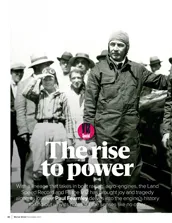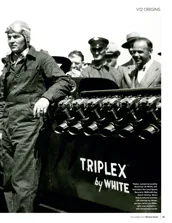Having said all that, one can’t help but admire the sheer relentless competitive fury of Senna and how he instinctively refused to accept weakness in the teams he drove for. It’s quite clear the Brazilian was a pain in the neck to Honda through this period, because it was as clear as day to him what was coming. Propelled by the increasingly potent Renault V10, he knew the nascent Patrick Head-Adrian Newey partnership at Williams would likely spell the end of McLaren-Honda’s period of technical domination. The Marlboro World Championship Team was beginning to creak and Senna knew he needed to work ever harder, on and off the track, to keep their run of success going. Equal to his pure speed over one lap, it is here where Senna’s true greatness could be found.
Honda’s entirely new 60-degree V12 was a direct response to the growing storm brewing in Viry-Châtillon. The RA121E was the Japanese manufacturer’s third F1 engine configuration in as many years and at 720bhp, it had plenty of punch – but it was also longer, heavier and thirstier than the previous RA100E V10. That would cause problems down the line, but in Neil Oatley’s latest MP4/6 the combination remained the benchmark – for now.
But having sampled the new engine in the MP4/5 test mule, Senna was unconvinced – and harangued Honda accordingly. Naturally conservative project leader Akimasa Yasuoka pushed back, insisting on detuning the engines in the early races of the season to preserve reliability. He was right to do so, the new Williams FW14 proving unreliable, specifically concerning elements within its new semi-automatic gearbox – and with hindsight that was at the core of Senna and McLaren’s championship wins. Ayrton won the first four races, while Mansell struggled even to get off the mark.

Senna gifted the Suzuka win to Berger
Pascal Rondeau/Allsport
At this point it’s perhaps important to remember that McLaren more than lived up to its side of the bargain. Outwardly an evolution of its predecessor, the arrival of Henri Durand from Ferrari mid-1990 proved a significant aid to Oatley and his design team on the MP4/6. The chassis was significantly different to accommodate not only the longer engine but also the larger fuel cell it demanded. The suspension too was a departure, thanks to new a installation positioning of the pushrod-activated coil springs and dampers. As always in F1, change one thing and that has a knock-on to the dimensions, shapes and sizes of everything else. McLaren was still cutting edge on chassis design, even if Honda appeared to be losing its mojo in what turned out to be its penultimate season before pulling the plug on F1 – and even if the Woking team was about to fall behind its rivals in Didcot when it came to the brewing electronics war that would change the game entirely in 1992.
The heavy fuel consumption almost fatally undermined all that good work from the early races in 1991. By mid-summer Mansell was shrugging off the surprising threat from his team-mate Riccardo Patrese and FW14 was finding its groove – just as Senna suffered two embarrassing retirements in consecutive races at Silverstone and Hockenheim. His car had run out of fuel and the team worked frantically on the fuel metering issue – imagine what Senna must have been like to live with in those weeks! But then Honda reminded Renault and everyone else that it was far from a spent force.

Mansell congratulates the champion: his moment would come in ’92
Kazuhiro Nogi/AFP via Getty Images
Already on its third spec of V12 by Silverstone, in Hungary the RA121E could now rev to 14,800rpm in short bursts and in combination with a lightened chassis and a bevy of new bits – Newey recalls McLaren personnel weighed down on arrival at the Hungaroring by bubble-wrap packages – Senna hit back with a vital victory. He did it again at Spa, despite nursing a gearbox problem and helped in large part by both Ferrari and Williams unreliability. By hook or by crook, his lead was back to a comfortable 22 points after Belgium – only for Williams to strike back with three wins on the bounce, albeit with mechanic finger trouble at an Estoril pitstop robbing Mansell of a wheel and a vital hat-trick. Still, after Spain and the first grand prix on the new Circuit de Catalunya, Senna was back under pressure with two rounds to go – only for Mansell to let him off the hook with that journey into the gravel at Suzuka, as more Honda engine development kicked in.



